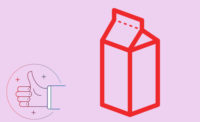State of Industry 2017: New Technology Allows Creativity, While Speeding Time to Market

There is little doubt that new technologies are contributing to changes in packaging design. New technologies are opening up design innovation to a larger customer base. Smaller companies that may have been relegated to stock packaging because of their low volume now have more options.
This is especially true in developments related to printing. Respondents were especially vocal about digital printing and its ability to enhance design efficiency while allowing more creativity and customization. Digital printing quality and costs are rapidly improving, allowing more customization with packaging graphics. In addition, suppliers are finding new methods that allow direct digital printing on substrates such as pouches or metal cans.
“With the advent of digital printing, clients can refine their package messaging to meet changing consumer dynamics,” says one survey respondent.
“Digital printing can open up expanded opportunities for channel/customer exclusives and other short-run capabilities,” says another. Yet another respondent says the biggest advantage seen is the ability to find a local printer who can print labels in multiple designs in the quantities required at low cost and great flexibility.
Another printing technology that is creating excitement in the industry is 3D printing and the evolution of 3D-rendering software. This type of printing is cited for improving packaging visualization, streamlining design and improving speed to market. Several participants say it aids innovation because they can produce more prototypes at lower costs.
However, some participants say designers must look to the future. They claim that packaging must become part of an interactive experience, characteristic that future generations will require.
“Mobile interactivity means that packaging must exist in 4D, not just 3D. Continued growth of e-commerce impacts packaging’s role as less of an in-store billboard and more of an experiential element after delivery,” according to one respondent.
Looking for a reprint of this article?
From high-res PDFs to custom plaques, order your copy today!








